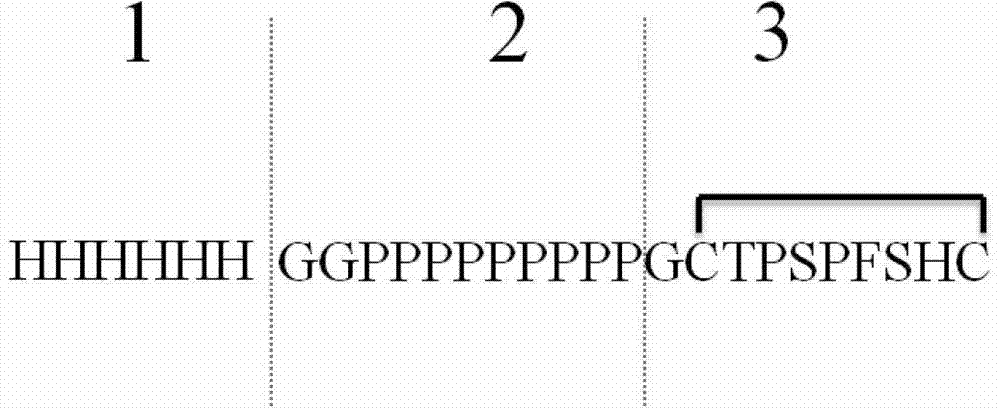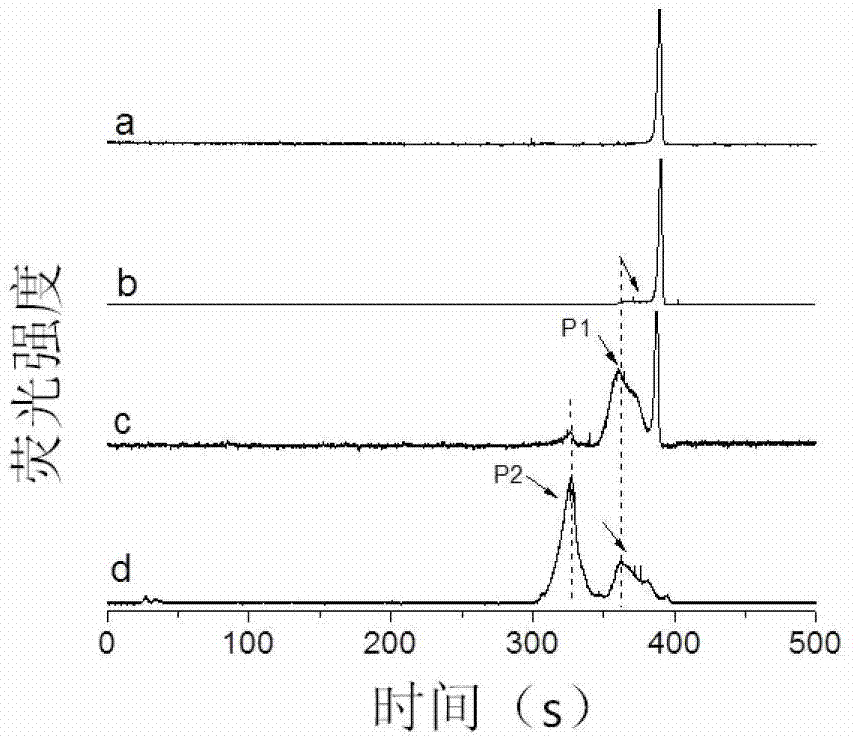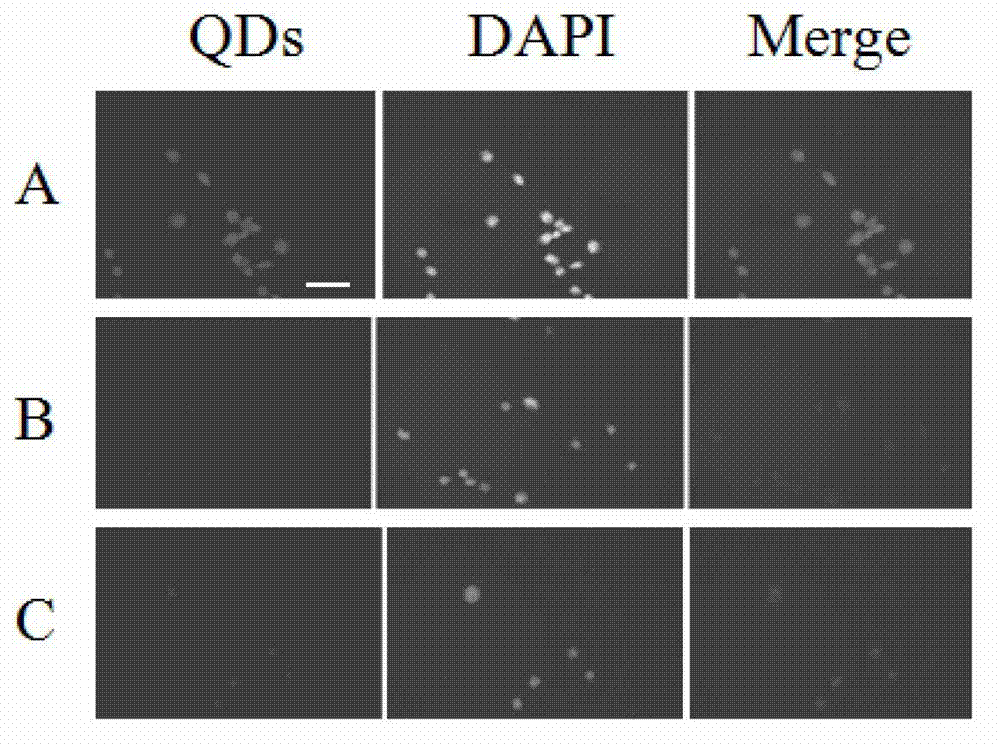Quantum dot targeting probe for colorectal cancer tumor tissue identification and preparation method thereof
A tumor tissue and tumor targeting technology, applied in preparations for in vivo experiments, chemical instruments and methods, pharmaceutical formulations, etc., can solve problems such as poor stability, influence of coupling agents, and restrictions on popularization and use, and achieve stability High, fast combining speed, highly reproducible results
- Summary
- Abstract
- Description
- Claims
- Application Information
AI Technical Summary
Problems solved by technology
Method used
Image
Examples
Embodiment 1
[0019] The method of the present invention adopts the conventional solid-phase Fmoc method, that is, the monomer amino acid protected by Fmoc on the solid-phase resin is deprotected and the amino group is exposed, and a peptide bond is formed with the carboxyl group of the amino acid in the solution through a condensation reaction, thereby connecting the amino acid to On the resin, the peptide chain extends from the C-terminus to the N-terminus.
[0020] 1. Basic materials:
[0021] (1) Resin and connecting molecule: The resin selected by the solid phase Fmoc method is Rink Amide-ChemMatrix ? Resin. This resin has very good swelling properties, can make the condensation reaction between peptide chains better, and there is enough network space to meet the growing peptide chains. HBTU and HOBt are used as linking molecules to fix the peptide molecules on the resin.
[0022] (2) Monomer: The monomer used in the synthesis is a chemically modified α-amino acid.
[0023] 2. Reaction steps...
Embodiment 2
[0042] The polypeptide synthesis steps are the same as in Example 1. The synthetic peptide ligand sequence is as follows:
[0043] cyclo(1, 9)-CTPSPFSHCGP 10 G 2 H 7 .
Embodiment 3
[0045] The polypeptide synthesis steps are the same as in Example 1. The synthetic peptide ligand sequence is as follows:
[0046] cyclo(1, 9)-CTPSPFSHCGP 11 G 2 H 8
PUM
 Login to View More
Login to View More Abstract
Description
Claims
Application Information
 Login to View More
Login to View More - R&D Engineer
- R&D Manager
- IP Professional
- Industry Leading Data Capabilities
- Powerful AI technology
- Patent DNA Extraction
Browse by: Latest US Patents, China's latest patents, Technical Efficacy Thesaurus, Application Domain, Technology Topic, Popular Technical Reports.
© 2024 PatSnap. All rights reserved.Legal|Privacy policy|Modern Slavery Act Transparency Statement|Sitemap|About US| Contact US: help@patsnap.com










